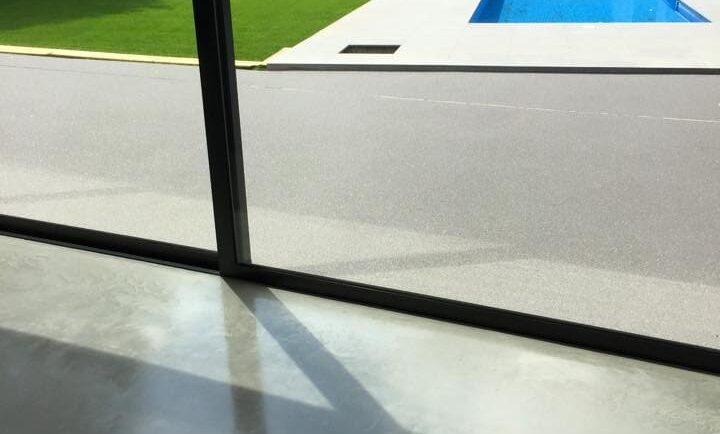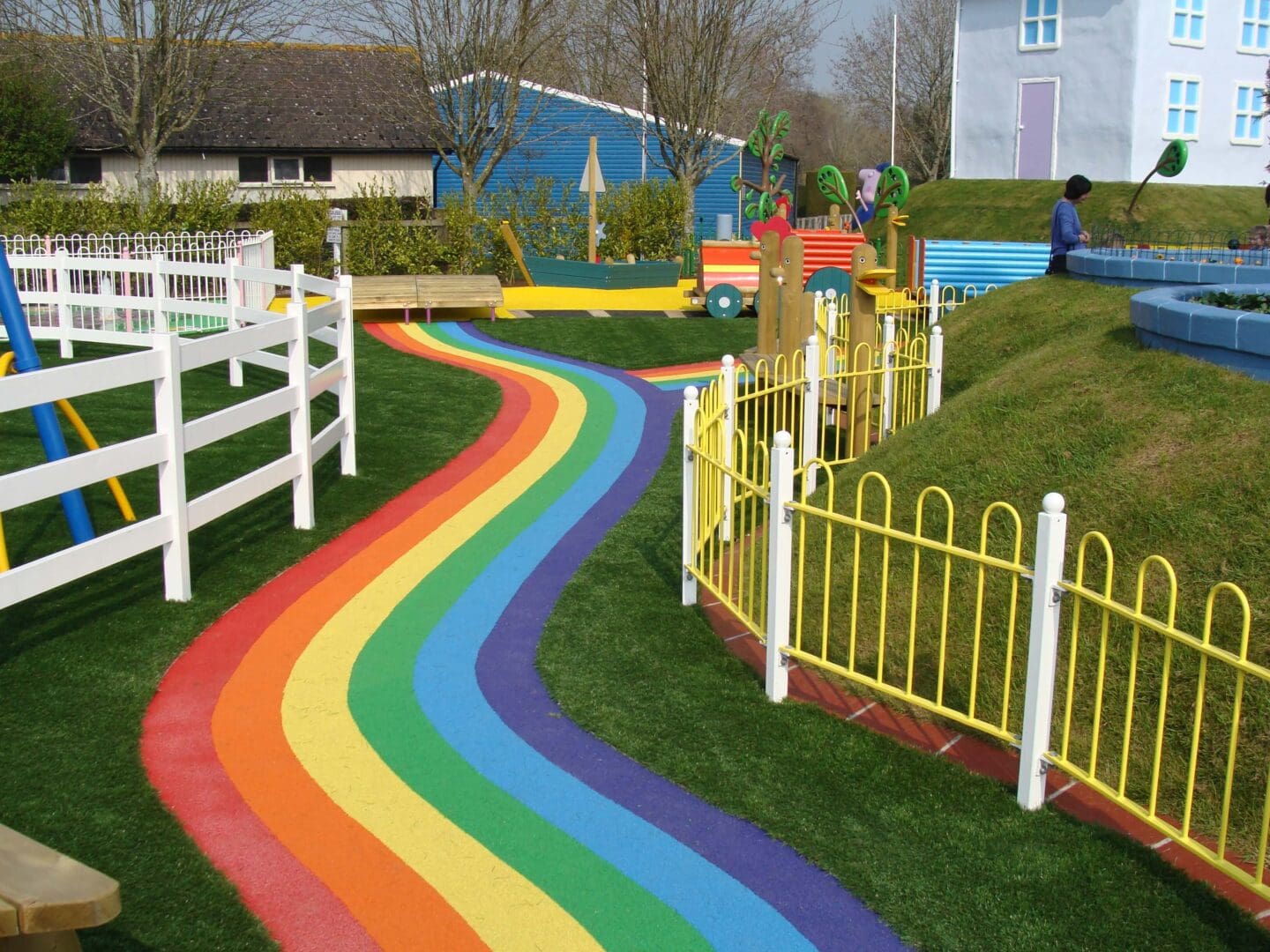
What Are Resin Bound Patios and Why Are Homeowners Choosing Them?
Outdoor living has become part of daily life for many UK homeowners. Patios are now...
Read More
When you’re choosing a surface for a playground or a public pool, you’re making a critical decision about safety, durability, and long-term cost. We provide the perfect solution for schools, parks, leisure centres, and more, offering a stylish, non-slip, and hard-wearing resin based flooring surface.
With over 15 years of safety surfacing experience, we have the expertise to advise clients on the best solution for their needs. Our expert team installs high-quality products, and our fast installation process often makes surfaces accessible within 24 hours.
This guide is based on our real-world experience. We’ll detail the benefits and realities of installing and maintaining rubber flooring in high-traffic settings where safety is the top priority.
For playgrounds, the specification comes down to one thing: impact attenuation. The surface needs to be soft enough to reduce the severity of a fall. Traditional materials like wood chips or sand simply don’t cut it.
That’s why most modern playgrounds have resin based flooring, often called wet pour. We use a high-quality polyurethane resin binder to mix with rubber granules, often recycled SBR (Styrene Butadiene Rubber) for the base layer and new EPDM (Ethylene Propylene Diene Monomer) granules for the top layer. This creates a seamless, impact-absorbent surface that is both tough and forgiving.
Just like with pools, this material is porous, so rainwater drains right through. This eliminates mud and keeps the play area usable even after a downpour. From a design standpoint, the flexibility is a huge bonus. We can use different colours of EPDM to create patterns, games, or educational designs directly on the ground.
A pool deck is one of the most punishing environments for any surface. Constant water, chlorine, and UV exposure will break down most materials. A lot of people think tiles are the answer, but any installer will tell you the grout lines are a nightmare. They harbour grime and stain, becoming a constant maintenance headache. And don’t even get me started on the slip hazards.
This is where a resin-based flooring system earns its keep. The primary benefit of resin-based flooring is its permeability, a key safety feature for any site. The porous structure of these surfaces allows water to drain directly through them and into the sub-base. This eliminates standing water and the risk of dangerous slip-and-fall incidents. This makes resin based flooring a great choice for SuDS (Sustainable Urban Drainage Systems) compliance. A properly installed rubber floor gives you consistent, safe grip, which slick tiles or uneven paving do not.
Aesthetics give you a lot of creative freedom. We can use a wide range of natural or recycled rubber granules to create a custom finish. You can create everything from a sleek, contemporary poolside to a fun, multi-coloured water park zone for a hotel or public facility. We use systems like RubbaFlex®fg and RubbaFlex®sg to achieve these looks.
In commercial spaces, first impressions matter. Resin based flooring systems combine durability and modern design. The result is a seamless surface that’s easy to clean, hard-wearing, and safe for heavy foot traffic. Without grout lines or uneven joints, you reduce maintenance and can uphold hygiene standards more easily. From showrooms and retail spaces to offices and wet/dry leisure facilities, our floors perfectly balance style, safety, and long-term value.
Request a free quote for your project.
Here’s an insider tip people often overlook. The ambient temperature and humidity directly affect the curing time of any resin-based flooring system. As a contractor, you must manage this carefully. If the temperature is too low, the resin will not cure properly. If it’s too high, it will flash cure, leaving you with a mess of trowel marks and an uneven surface.
This is a big reason to hire an experienced installer. They know how to manage job site conditions and mix the product correctly to avoid costly failures. We always check the technical data sheets (TDS) for the product’s recoat window and cure schedule.
You can easily maintain a new resin based flooring surface, but a small amount of regular maintenance will keep it looking great.
A professionally installed resin-based flooring has a higher initial cost. But you need to look at the big picture. The long-term ROI is clear when you factor in the reduced maintenance, longer lifespan, and safety benefits of a seamless, slip-resistant surface.
My advice? Don’t just get hung up on the initial quote. Find an installer with a proven track record who specialises in these systems. Ask to see their work, check their references, and listen for them to talk about the technical details like curing schedules and sub-base preparation. A true pro sells you a floor and educates you on the entire process.
Experts in epoxy and polyurethane flooring systems

Outdoor living has become part of daily life for many UK homeowners. Patios are now...
Read More